Dungeons & Dragons, perhaps more than any other tabletop RPG, is a living game—shaped by the adventures and battles of millions across the world. The 2024 rules update arrives not as an abrupt revolution, but a deeply considered evolution of 5th Edition’s foundation. Often dubbed “5.5E” by the community, these updated core books represent a polished and contemporary iteration of rules beloved by players since 2014.
Far from rendering previous sourcebooks obsolete, the 2024 revision was designed for seamless compatibility. Adventures and supplements published over the last decade remain viable, ensuring that well-worn Player’s Handbooks and heavily bookmarked adventures aren’t left gathering dust. Yet, beneath this continuity lies an extensive effort to refresh mechanics, strike a more inclusive tone, and offer deeper mechanical clarity. The promise: a familiar game, made crisper and even more inviting.
Central to the update are the guiding principles of enhanced accessibility, modularity, and player choice. This means that rulebooks are not just easier to understand, but also more flexible—allowing groups to pick and choose the options that fit their particular style of play. Character creation, spellcasting, and even exploration are framed to encourage creativity and personalization, rather than lockstep optimization.
All three pillars of play—the Player’s Handbook, Dungeon Master’s Guide, and Monster Manual—have received substantial overhauls. These aren’t mere tweaks, but comprehensive redesigns of both content and presentation. Expect redrawn borders between narrative flavor and mechanics, a reinvigorated commitment to clear language, and user-friendly formatting throughout.
In the paragraphs that follow, we’ll break down the most transformative changes in each area—spotlighting the new terminology, the reimagined D&D character creation, fresh tactical depth for martial classes, overhauled spellcasting, revised pacing, monster design innovations, DM support tools, and guidance on blending old and new content at your table. Welcome to the future of 5E—one foot in the legacy, eyes trained firmly on what’s next.
- Core Terminology and Rule Presentation
- Overhauled Character Creation
- Weapon Mastery and Martial Class Enhancements
- Spellcasting Adjustments and Magic Design
- Rest, Healing, and Combat Tempo
- Monster Manual and Encounter Design Improvements
- Dungeon Master’s Guide and Rule Modularity
- Compatibility and Transition Tips
- Final Thoughts: Upgrade or Stick with 2014?
Core Terminology and Rule Presentation
Language shapes experience, and the 2024 rules update wields this wisdom with subtlety and force. The most visible change is the universal replacement of “race” with “species.” This adjustment, simple on its surface, ripples through character creation and world lore, spotlighting respectful and modern vocabulary in a way that feels both meaningful and overdue.
Try my AI Tabletop RPG generators...and an extensive library of content!
But inclusive terminology is only the beginning. Across the new core books, a global rules glossary consolidates definitions for conditions, actions, and mechanical elements. This centralized reference is reinforced by a harmonized format—every mechanical rule now sits distinct from narrative flavor. Mechanics are sharply boxed, clearly indexed, and never ambiguous, while story-rich passages are set apart visually and textually.
Artful revisions in layout and chapter organization mean flipping through pages at the table becomes less of a scavenger hunt and more of an intuitive journey. Stat blocks, whether for monsters or class features, boast clarified abilities, consistent formatting, and highlighted interactions in the margins. Sidebars elegantly call out optional rules, edge cases, and lore notes without muddying the mechanical core.
Each book’s structure benefits: tables are less cluttered, conditions and abilities are always rendered consistently, and “rules as written” (RAW) is easier to identify versus “rules as intended” (RAI) or story embellishments. Navigating, referencing, and teaching D&D is now friendlier than ever before.
Key Terminology, Glossary, and Presentation Changes:
- “Race” replaced with “species” throughout all materials
- Global rules glossary for conditions, actions, and effects
- “Rules Element” vs. “Narrative Element” formatting clearly separates mechanics from lore
- Conditions (e.g., Grappled, Poisoned) now have standardized definitions and layout
- Modular “Sidebar” highlights for optional/variant rules and DM notes
- Stat blocks reorganized for top-down readability—Actions, Reactions, Bonus Actions, and Legendary Actions
- Chapter intros and summaries for each section, enhancing navigation
- Pronoun and language inclusivity applied throughout
- Standardized spell descriptions with boxed mechanics and italicized flavor text
- Indexed pop-out references for keywords and status effects
- Mechanic cards and pullout tables for quick reference during play
- Visual cues and color-coding to distinguish status effects and rule modules
Two transformative results emerge from these changes. First, approachability skyrockets: learning D&D is less intimidating, and teaching it becomes a less Herculean task. Second, mechanical clarity ensures rules disputes are rarer, and improvisation is more directly rooted in the game framework, freeing the DM and players to focus on what matters—story and strategy.
⚔️ Fantasy RPG Random Tables Books
Make life as a Gamemaster easier…
If you play Dungeons & Dragons, Pathfinder, or other fantasy RPGs, this
RPG random tables series
is packed with encounters, NPCs, treasure, and more. Available in eBook or print—either way, you’ll have a wealth of adventure ideas at your fingertips.
This new approach does more than make pretty books. It turns the rulebooks into living companions at the table, helping new and veteran groups alike to savor the imaginative heart of D&D, without getting tangled in the wording.
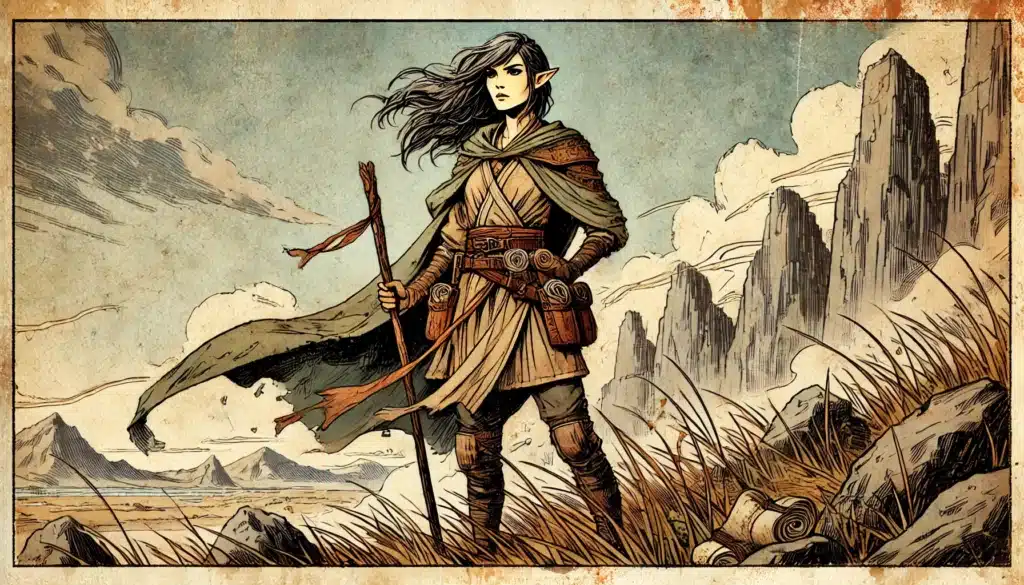
Overhauled Character Creation
Character creation has shifted from a formulaic flowchart to an open-ended journey of self-discovery. In the new system, your character’s species (formerly race) offers vivid thematic and mechanical traits—such as darkvision, climbing speed, or elemental resistances—but no longer mandates ability score increases. That agency has passed to the hands of backgrounds.
Backgrounds are now the primary vessel for mechanical customization. Each background supplies ability score bonuses, a flavorful starting feat, suggested skill or tool proficiencies, and a kit of starter equipment. These elements combine to answer not just “what” your character is, but “who” they are—embedding narrative context in first-level builds rather than waiting for backstory to fill in the gaps.
Where previous editions nudged players to optimize by ancestry, the 2024 update breaks that mold. Want a Half-Orc Wizard who spent their formative years as a Sage? You can. A Gnome Gladiator, fierce and spry? Absolutely. The boundaries of culture, tradition, and personal history are more porous, encouraging creativity and diversity on every character sheet.
This reframing of backgrounds allows D&D to reflect broader representation and lived experience. Instead of funneling choices through biological determinism, the emphasis lands squarely on player-driven narrative. Whether your character was forged in the fires of war, molded by a mentor, or shaped by tragedy, that context shapes who they are in the moment-to-moment of play.
The net effect: every freshly-minted adventurer is unique, drawing from their own blend of culture, circumstance, and personality rather than a rigid ancestral blueprint. This change not only deepens roleplaying but invites every table to celebrate individuality and imagination.
| Background | Starting Feat | Suggested Skills/Tools | Narrative Character Hook |
|---|---|---|---|
| Soldier | Weapon Mastery | Athletics, Intimidation | Haunted by a pivotal battle that changed your values |
| Scholar | Keen Mind | Arcana, History, Calligrapher’s Supplies | Driven to recover a lost library’s secrets |
| Outlander | Tough | Survival, Athletics, Herbalism Kit | Fleeing a prophecy whispered by forest spirits |
| Acolyte | Magic Initiate | Insight, Religion, one language | Estranged from a fallen sect—seeking redemption |
| Artisan | Crafter | Smith’s Tools, Investigation | Hoping your invention will make your mark in history |
| Performer | Inspiring Leader | Performance, Deception, Disguise Kit | Pursued by a jilted noble you once enchanted |
| Urchin | Lucky | Sleight of Hand, Stealth, Thieves’ Tools | Hunted for a “curse” you carry |
| Courtier | Silver Tongue | Persuasion, Insight | Plotting to regain your family’s lost title |
| Sailor | Mobile | Acrobatics, Perception, Navigator’s Tools | Obsessed with mapping a sea monster’s lair |
| Gladiator | Durable | Athletics, Performance, one gaming set | Your rival vanished the night before a big match |
With this new approach, your character’s personality and backstory shape their abilities from session one—not as an afterthought, but as the heart of the build. Diversity isn’t just possible, it’s automatic—every choice tells a story.
There’s a certain magic in this. When your adventuring party is forged less on the anvil of optimization and more on themes of personal history, survival, and ambition, you end up with richer tales and more memorable heroes. The rules, at last, support the infinite variety of characters D&D has always promised.
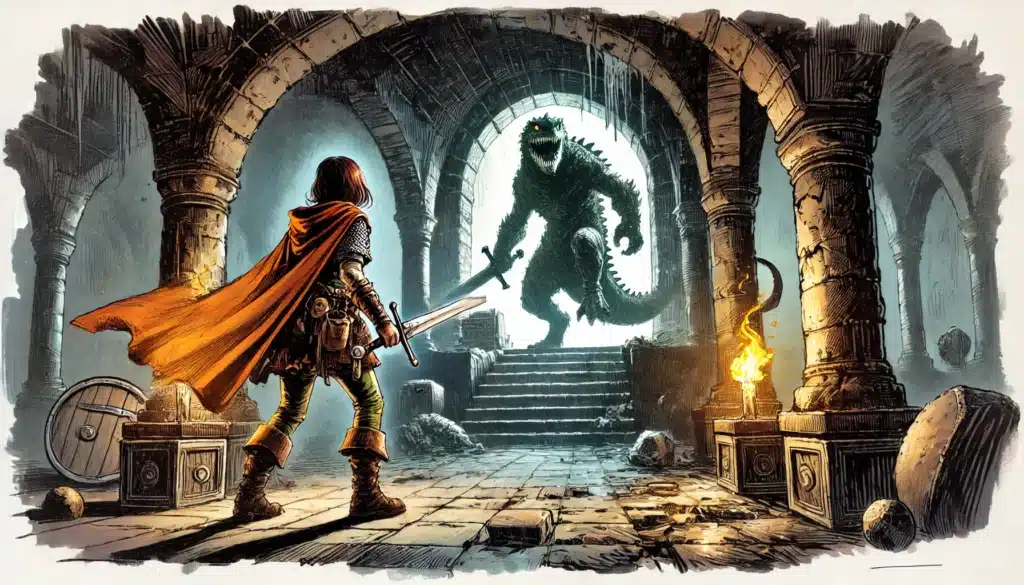
Weapon Mastery and Martial Class Enhancements
If there’s one update that’ll make fighters, barbarians, and monks fist-pump in real life, it’s Weapon Mastery. For too long, martial classes have looked on as spellcasters wove complex tactics round after round. The 2024 update arms mages with no new tricks, but puts martials squarely in the tactical spotlight.
Weapon Mastery means that every weapon type carries a signature mastery property—special tactical effects that only martial classes can unlock. The longsword is more than just a “1d8 slasher” now; wielded by a master, it flexes between damage and defense. Glaives can cleave, letting you sweep through lines of foes. Flails topple, knocking enemies from their feet. These flourishes transform weapon choice into a mechanical decision, not just aesthetic flavor.
Fighters, barbarians, monks, and select subclasses now gain multiple Weapon Mastery picks as they level. Different weapons become tools for particular scenarios—crowd control, single-target focus, or zone denial—making round-by-round tactics more compelling and dynamic.
⚔️ Fantasy RPG Random Tables Books
Make life as a Gamemaster easier…
If you play Dungeons & Dragons, Pathfinder, or other fantasy RPGs, this
RPG random tables series
is packed with encounters, NPCs, treasure, and more. Available in eBook or print—either way, you’ll have a wealth of adventure ideas at your fingertips.
The innovation doesn’t stop at damage boosts or knockbacks, either. New mastery effects include disarming opponents, imposing conditions, or triggering movement—granting martial classes a treasure trove of options that go beyond “I hit it again.”
Weapon and Mastery Properties:
- Glaive: Cleave (sweep a second adjacent target)
- Longsword: Flex (choose slashing or thrusting, or gain defense if two-handed)
- War Pick: Push (force enemy back 5 feet on hit)
- Flail: Topple (chance to knock foe prone)
- Greatsword: Heavy Cleave (strike two foes in a line)
- Rapier: Precise (reroll one attack die per turn)
- Scimitar: Vex (impose disadvantage on enemy’s next attack)
- Spear: Brace (hold enemies at reach, gain reaction attack)
- Maul: Crush (reduce enemy speed on hit)
- Longbow: Swift Shot (bonus action shot after a kill)
- Dagger: Quickdraw (draw as free action, bonus attack at close range)
- Morningstar: Rattle (lower enemy’s AC or concentration)
- Halberd: Hook (pull enemy 5 feet closer)
Gone are the days when martial builds felt interchangeable. Now, your weapon is a statement—of history, training, and intent. Each round in combat pulses with new calculations: do you press for a cleave to thin the mob, or attempt to disarm a spell-wielding foe?
This new layer of tactical grit rewards creative players and veteran optimizers alike. More than just a bone for fighters, Weapon Mastery reinvigorates every melee and ranged brawl, giving martials the impact they’ve always deserved.
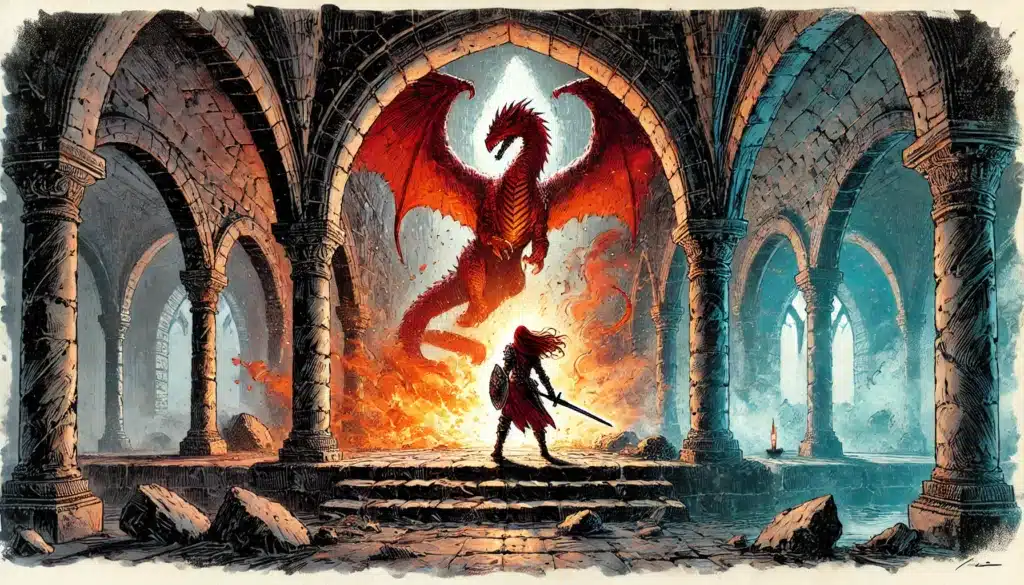
Spellcasting Adjustments and Magic Design
Magic in the 2024 core remains as mysterious and powerful as ever, but the experience of spellcasting at the table is sharper, clearer, and more exhilarating. Spell lists have been refined, rebalancing notorious duds and over-performers, while spell wording now splits cleanly between mechanics (in clear, concise boxes) and evocative flavor.
One of the most significant improvements is the introduction of unified creature stat blocks for spells that summon or conjure—no more flipping through tomes to assemble a “custom” beast. Pick the stat block, flavor it as any creature described, and focus on the narrative rather than endless stat juggling. This shift trims the mental fat and puts the spotlight where it belongs: on epic magical moments.
Problematic or underwhelming spells have received the scalpel. True Strike, once a meme spell, is reworked for relevance. Concentration mechanics are clarified, clarifying stacking and interruption scenarios. Each school of magic is better categorized, helping DMs and casters alike make thematic and mechanical decisions.
Finally, spell lists (for classes and subclasses) are unified and rationalized. Redundant or legacy spell names have made way for clearer choices and better synergy between theme, utility, and combat. The result? Casters are easier to manage, but no less dazzling or dangerous.
Notable Revised and New Spells:
- True Strike: Grants advantage on the next attack within one minute, bonus action, no concentration
- Find Familiar: Pick a unified stat block, reskin as any animal companion
- Healing Word: Now has a limited use per short rest, but scales more effectively
- Mage Armor: Duration extended, may be cast as part of preparation/ritual
- Thunderwave: Reduced friendly fire radius, improved scaling at higher levels
- Fireball: Simplified wording, optional damage typing via metamagic
- Spirit Guardians: Clarified area, now works with new concentration interruption rules
- Eldritch Blast: Standardized to one attack per caster tier, upcasting options
- Revivify: Lowered material cost, clearer timing on use post-mortem
- Barkskin: Now includes resistance to non-magical damage, no AC minimum
- Conjure Animals: Uses unified stat blocks with cosmetic choice of animal
- Heroism: Now can be cast as a bonus action, temp HP slightly reduced
- Absorb Elements: Now triggers automatically as a reaction (once/long rest)
The impact is plain: casters maintain their signature versatility, but the guesswork, page-flipping, and “DM rulings for every contingency” diminish. Spells are quicker to resolve, fairer across playstyles, and more inviting to new players.
In sum, the updated approach to magic turns spellcasting into an elegant exercise—packed with narrative power, but no longer burdened by unnecessary complexity. The arcane, brought (just a little) more within mortals’ grasp.
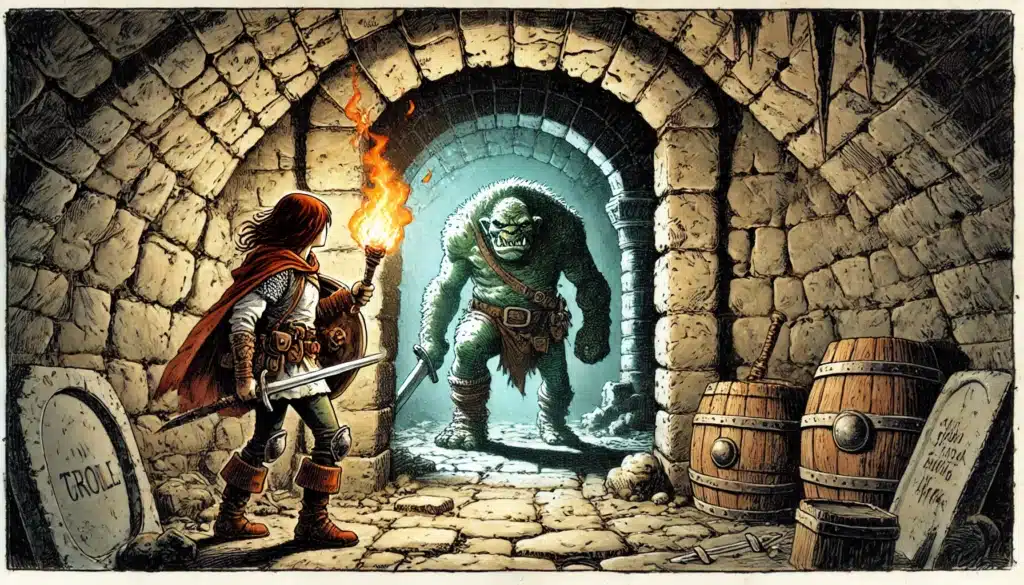
Rest, Healing, and Combat Tempo
Few things can slow a campaign’s heartbeat quite like the “rest spam” that plagued 5E tables—eight hours here, eight hours there, until threats evaporate amid endless down time. The 2024 update puts its finger firmly on D&D’s pulse, recoding adventure pacing and resource management for far greater dramatic tension.
Long rests now require a full 16 hours before they may be repeated, not merely eight hours of sleep. This subtle but potent change closes loopholes around “pacing stalling,” making each long rest a considered decision rather than a default fallback. Adventuring days feel longer, consequences stretch further, and stakes naturally rise.
Potions, those glass vials so often relegated to market shopping or downtime, become fiercely relevant in combat: they may now be consumed as a bonus action. This encourages daring, split-second resource plays and gives healing items their rightful seat at the tactical table. When the cleric is down, the rogue can now swig a potion and stay in the fight.
Exhaustion—once a punishing six-level slide into oblivion—is now a more modular and trackable scale. Each point sets a concrete penalty, from ability checks to attack rolls, and recovers more flexibly, encouraging risk without overly penalizing brave heroes. Healing spells and rest mechanics are clarified and streamlined; “Healing Word” now has a short rest cooldown, while downtime activities reinforce party recovery and narrative pacing.
Key Changes Affecting Pacing and Recovery:
- Long rests require 16 hours between uses (not just 8 hours of rest)
- Potions can be consumed as a bonus action (not an action)
- Exhaustion now uses a flat penalty per level (-1 to all d20 rolls per level), caps at 10
- Healing Word: Limited uses per short rest, cannot be “spammed” in one encounter
- Cure Wounds: Improved scaling based on spell level
- Short rests have clarified timeframes and can include more narrative actions
- Hit dice regain with expanded downtime options
- Death saving throws: stabilized condition clarified, healing resets death saves
- Rapid Recovery: New optional downtime activity for faster healing at the cost of resources
- Gentle Repose: Spell is streamlined to always prevent corpse decay, easier narrative use
- Encumbrance: Optional, simplified system for group pacing
- Downtime: Modular activities, including training, recovery, and safe haven building
These changes do more than tweak the numbers—they sculpt each session’s narrative arc, keeping tension simmering without punishing players arbitrarily. Fights are grittier and more cinematic, resource choices weightier, and adventure days more cohesive.
At the heart of it: D&D’s rest and recovery system finally supports pacing that feels like a fantasy novel—danger and hope ebbing, flowing, and crescendoing as each adventuring day unfolds.
Monster Manual and Encounter Design Improvements
Enter the Monster Manual, now reimagined for the director’s chair as much as the DM’s screen. The 2024 update thoroughly rebalances, refines, and reorders its monsters—delivering not just better stats, but more compelling roles in battle, clearer ability explanations, and easier encounter design.
Stat blocks are reorganized top-down, separating Monster Actions, Reactions, Bonus Actions, and Legendary Actions for immediate clarity. Gone are the meandering passive abilities lost in the text; now, every monster’s key traits are visible at a glance, with boxed callouts for spells, environmental effects, and flavor.
Try my AI Tabletop RPG generators...and an extensive library of content!
Monsters have been sorted into clear roles: Controller, Lurker, Skirmisher, or Brute. This shift empowers DMs to build tense, cinematic encounters—not just by “CR math,” but by combining monsters with complementary battlefield effects and personalities.
The result? Fewer grindy slugfests, more thrilling, story-rich struggles where every foe moves and fights with palpable intention.
| Monster Name | Updated Combat Role | New/Clarified Abilities | Notable Changes from 2014 |
|---|---|---|---|
| Troll | Brute | Regeneration (clarified), Cleave attack | Regeneration limited by radiant/fire |
| Gnoll Fang | Skirmisher | Pack Tactics, Pounce | Wider tactical mobility |
| Mind Flayer | Controller | Mind Blast reworked, Psionic Ward | Stunning effects split over rounds |
| Goblin Boss | Lurker | Nimble Escape, Command Ally | Bonus action command, clearer hiding |
| Adult Red Dragon | Brute/Controller | Fiery Breath, Frightful Presence (modular) | Rebalanced damage, lair actions |
| Wight | Controller/Lurker | Life Drain, Animate Dead | Soulsight vision, revised undead command |
| Medusa | Controller | Petrifying Gaze (reaction clarified) | Aura effects made explicit |
| Marilith | Skirmisher | Parry, Multiattack, Tail Lash | Legendaries clarified, action economy improved |
| Rust Monster | Lurker | Corrode Metal (by item type) | Weakens adventurers’ gear directly |
| Lich | Controller | Rejuvenation, Legendary Resistance | Legendary actions streamlined |
DMs will find encounter prep less a grind, more a creative exercise. Monsters are not just statistics—they’re dramatic actors, with roles and motives that shape the scene the moment they stalk onto the stage.
The upshot? More cinematic, memorable battles, and a DM experience that prizes fun over flipping pages in the heat of the action.
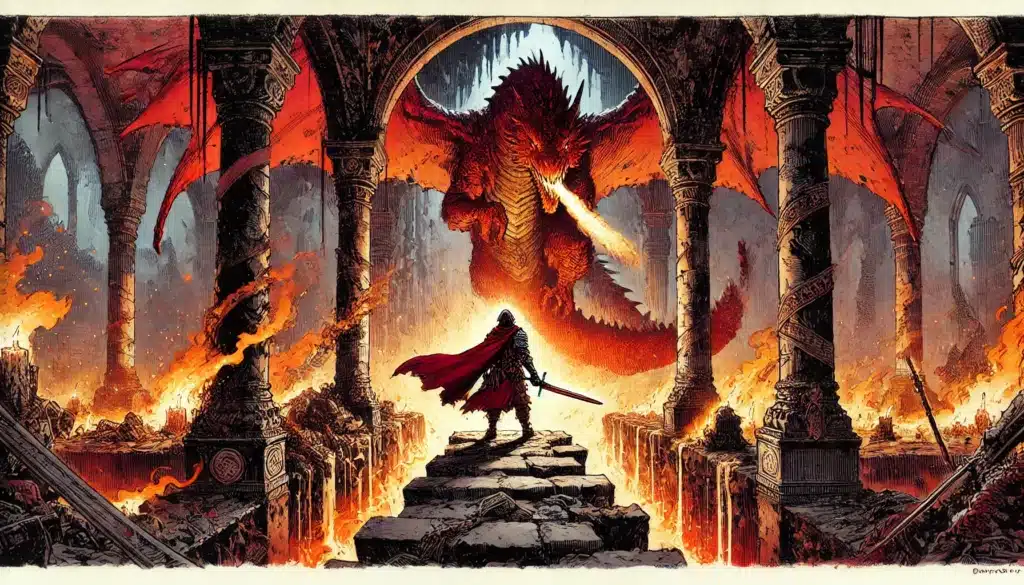
Dungeon Master’s Guide and Rule Modularity
Perhaps the most unsung hero of this update is the Dungeon Master’s Guide, reborn as both a welcoming mentor to novice DMs and a modular toolkit for world-builders. Its structure is overhauled for discoverability and practical advice, setting new DMs up for success from their first session.
Clear guidance threads through every chapter—encounter math is intuitive, with dynamic encounter-building tables and CR calculators. Optional rules are cleanly boxed and indexed, enabling groups to toggle complexity to their taste. Want gritty realism? Activate variant injury rules. Prefer fast-and-loose action? Streamline environmental hazards or exploration checks.
Expanded sections on tone, genre, and table norms invite groups of all experience levels to customize their D&D. Worldbuilding toolkits—complete with region generators, culture seeds, and villain framework tables—empower DMs to spin sprawling campaigns with a few creative dice rolls. Treasure tables are reworked, now with clearer rarity bands and contextual placement for rewards.
Noteworthy DMG Updates and Tools:
- Magic item tables reorganized by rarity and theme
- Faction-building tools for campaign-level intrigue
- NPC generator tables with personality, goal, and flaw columns
- Streamlined guidance for encounter balancing at all tiers of play
- Tools for customizing spell lists and monster roles
- Exploration procedure options (travel, hazards, navigation variants)
- Expanded downtime activity suggestions and mechanics
- Modular rule toggles for resting, encumbrance, and exhaustion
- Quick-build villain templates with motives and stat scaffolding
- Adventure framework tables for instant quest seeds
- In-world economy and treasure scaling guidance
- Advice for running genre-specific campaigns: mystery, intrigue, heist, sandbox
This all amounts to a DMG that’s as usable at the table as it is inspiring between sessions. The layout, language, and mechanical options support both improvisational and structured play, giving every DM the levers to run D&D their way.
⚔️ Fantasy RPG Random Tables Books
Make life as a Gamemaster easier…
If you play Dungeons & Dragons, Pathfinder, or other fantasy RPGs, this
RPG random tables series
is packed with encounters, NPCs, treasure, and more. Available in eBook or print—either way, you’ll have a wealth of adventure ideas at your fingertips.
For veteran DMs, the modularity opens doors to experimentation—run a saga by the rules today, go full narrative next arc. For the aspiring DM, it’s less a labyrinth, more a guided journey with plenty of exit ramps and safe harbors.
Compatibility and Transition Tips
One of the most reassuring aspects of this update is its commitment to backward compatibility. Wizards of the Coast’s design brief was explicit: the 2024 rules are intended to be drop-in replacements, not an enforced edition leap.
Many existing elements—such as subclasses from Tasha’s Cauldron of Everything, 2014 magic items, official modules, and adventure books—remain fully usable. Some features, like reworked spells or monster roles, may need a light touch to adapt to new stat blocks or terminology, but most content carries over seamlessly.
Wizards recommends mixing content with care—using the updated core rules as your bedrock, and layering in older options by referencing the global glossary for terminology, or adapting outdated rules as homebrew if needed. For ongoing campaigns, nothing must change unless the table chooses it.
Content Compatibility and Adaptation Examples:
- Tasha’s subclasses (e.g., Artificer, new Bard options) remain valid, just update terms like “race” to “species”
- 2014 and 2021 Monster Manuals: use adventures as written, swap in new stat blocks when desired
- 2014 magic items are 1:1 compatible unless replaced by new versions
- Official modules (e.g., Curse of Strahd, Out of the Abyss) require no updates; you may use new monster stat blocks for clarity if you choose
- Still use spells, feats, and features from XGE and TCE unless superseded
- New adventures will reference 2024 rules, but “conversion notes” are included for bridging lore or mechanics
- 2014 spell names/abilities: use global glossary for wording updates, but effect remains
- Classes and archetypes from older books can be ported; reference new ability score or background rules for an optional boost
- Magic item rarity, cost, and attunement rules compatible—update only if you want the new math
- Custom monsters/homebrew: follow layout/model of new stat blocks for ease
- Player options, feats, and backgrounds blend freely with new framework
- Downtime procedures, resting rules, and exploration systems can be picked a la carte
For tables in the thick of enduring campaigns, transition gently. Try introducing one or two 2024 rules at a time: perhaps start with the new spellcasting mechanics, then try out refreshed weapon mastery in a new arc. This staged approach minimizes disruption and lets everyone get comfortable at their own pace.
Ultimately, the aim is flexibility. The line between 2014 and 2024 rules is, by design, permeable. Mix, match, and blend to taste, and let the adventure roll on.
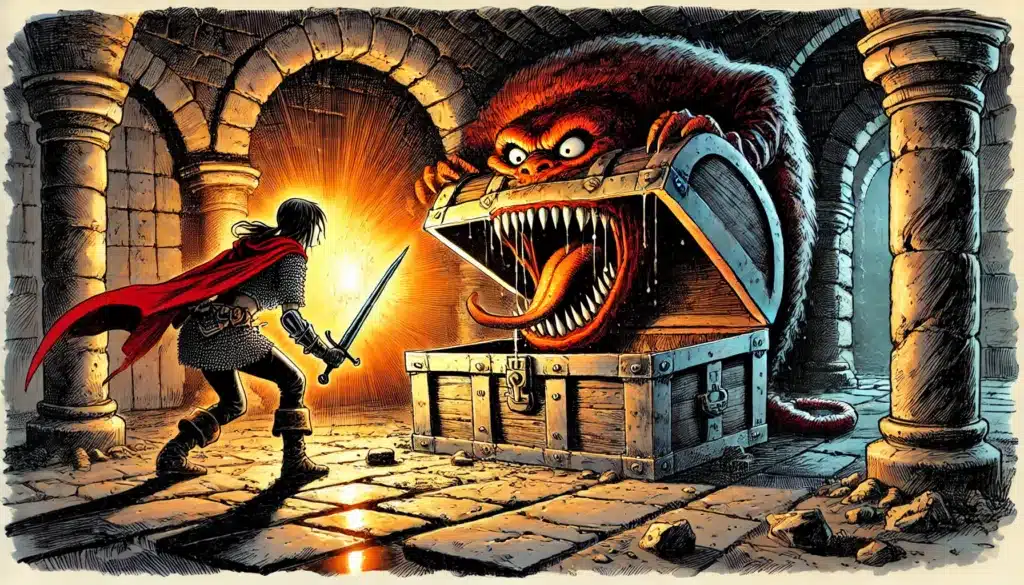
Final Thoughts: Upgrade or Stick with 2014?
As the 2024 rulebooks beckon from shelves—gleaming art, elegant tables, and all—the question looms: should you make the leap, or stay anchored in the reliable dock of 2014? The answer, true to D&D’s spirit, is a matter of your table’s preference and vision.
Upgrading to the new core is a clear win for those hungry for clarity, richer character customization, and a DM experience that’s as inspiring as it is practical. The revised language, layout, and mechanics remove stumbling blocks and offer a smoother ride for newcomers and veterans alike. Martial classes gain new tactical vigor, and spellcasters are no longer bogged down by legacy bloat.
The new books also shine for groups focused on player agency and representation. Narrative-forward backgrounds, decoupled from species-based stats, free up the kind of storytelling and creativity that’s become a hallmark of modern RPGs. For DMs, the streamlined encounter tools, monster roles, and worldbuilding aids lend every campaign some extra spark.
Yet, there are still solid reasons to keep rolling with the 2014 edition. Established campaigns, extensive digital libraries, and a well-worn familiarity with the older rules may tip the scales. Some groups may not want to relearn rests, adapt new spells, or replace battered sourcebooks mid-story. The 2014 suite remains fully valid—no edition gulf, no vanished content, just a parallel fork in the D&D road.
There’s no pressure, no FOMO-induced upgrade path. Wizards has made it clear: nothing is obsolete. The dividing line is porous, and you can pick and choose which innovations fit your group’s story, pacing, and game night cadence.
Most importantly, the 2024 rules celebrate what makes 5E so enduring—the collaborative canvas of shared storytelling. They polish, clarify, and elevate the experience without discarding what came before. Whatever path you choose, your D&D table is part of a wider, evolving tradition—stories old and new, rules past and future, all still welcome in the grand tapestry.
So weigh your options, talk to your group, and pick the path that lets you tell the best stories together. Because in the end, it’s not about what’s printed on the page, but the magic you create around the table.




